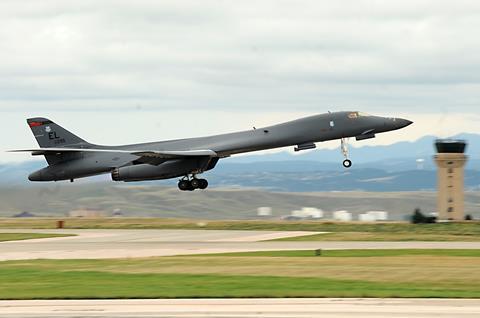A Boeing B-1B Lancer supersonic bomber operated by the US Air Force (USAF) crashed near a military airfield in northern state of South Dakota on 4 January.
The incident occurred at 17:50h local time, according to the air force, while the B-1B crew was attempting to land at Ellsworth AFB in Rapid City, South Dakota. The specific B-1B involved in the incident was assigned to the 28th Bomb Wing, stationed at Ellsworth.
Wing commander Colonel Derek Oakley confirmed the crash on 5 January in a statement released on Facebook, noting all four aircrew onboard the Lancer were able to safely eject from the jet-powered, variable-sweep-wing bomber.
“Three of the aircrew were treated on base for minor injuries,” Ellsworth AFB said on 5 January. “One airman [is] currently being treated at a local hospital for non-life threatening injuries.”

While the USAF says it is investigating, the cause of the crash is not yet known.
The mishap occurred after dark, with sunset occurring at 16:29h locally on 4 January. Weather data from the time of the crash indicates there was no wind in the Rapid City area, but the region was experiencing so-called “ice fog”.
The phenomenon of ice crystals suspended in the air can occur during periods of overlapping high humidity and low air temperature.
Rapid City weather data indicates the area around Ellsworth AFB was experiencing temperatures below freezing and 88% humidity at the time of the crash.
The USAF had 42 of the four-engined, heavy-lift Lancer bombers in service at the start of 2024, according to Cirium data.
Ellsworth is one of only two facilities in the world that host the B-1B type, according to the USAF.


































